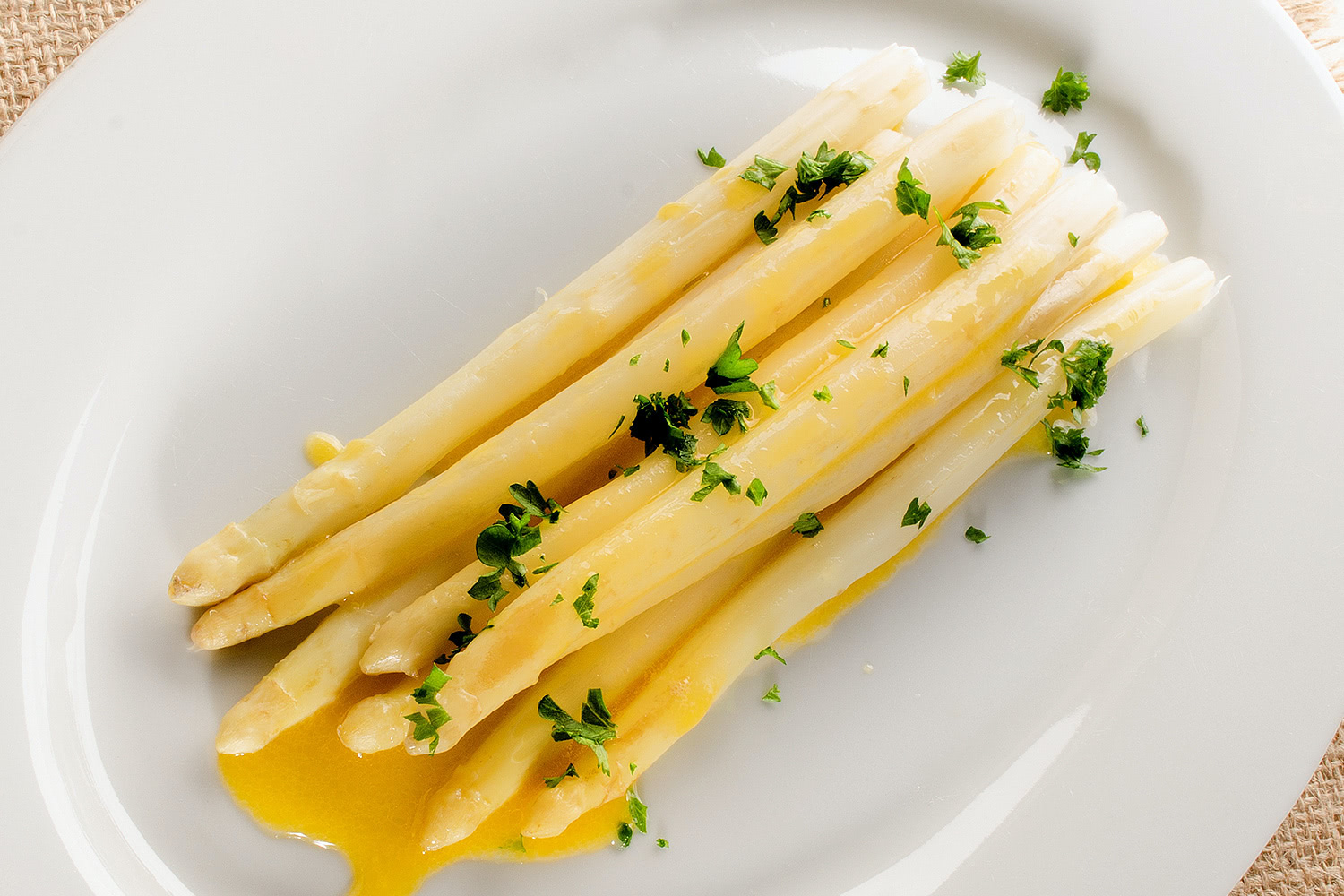Asparagus with butter: a royal delicacy
White asparagus is also called “royal vegetable”. It has always been considered a culinary delicacy. Its mild, slightly sweet flavor is best appreciated when served simply with butter to fully develop its delicate aroma. The tender white spears are the result of cultivation methods that protect the asparagus spears from sunlight, preventing the synthesis of chlorophyll and keeping the color of the asparagus pure.
Chefs often serve white asparagus with a creamy, melted butter sauce or hollandaise that pairs well with its delicate flavor to enhance its aroma. Combined with a fresh white wine such as Sauvignon Blanc or Riesling, the result is a dish that has long delighted gourmets.
White vs. green asparagus
While white asparagus has a subtle, delicate flavor, its green twin is more earthy and robust. The main difference lies in the way of cultivation. Green asparagus is allowed to enjoy the sunlight and thus develops chlorophyll, which gives it its distinctive green color and more intense flavor.
The consistency also distinguishes the two varieties. Compared to the soft and juicy character of white asparagus, green asparagus has a firmer bite. The differences in consistency are mainly due to the fact that green asparagus is stung much later than white and it begins to “harden” after contact with sunlight. After all, a full-grown asparagus plant can grow up to 1.80 m in height.
Whether you prefer white asparagus or the green variety, both are rich in vitamins as well as folic acid, iron, copper and calcium. However, green asparagus, thanks to the chlorophyll formed, contains important antioxidants that protect cells from free radicals.
There is a considerable difference in the preparation of white and green asparagus. To remove its hard, fibrous skin, white asparagus must always be peeled before it is prepared. Green asparagus, on the other hand, comes home almost ready to cook and only needs to be washed before cooking. Since green asparagus no longer needs to protect itself from underground predators, it has an edible and soft skin. Only the first one to two centimeters must be removed from thicker asparagus shoots, as they are quite hard and woody.
The phenomenon of asparagus urine
A peculiarity of eating asparagus is the strong and characteristic smell of one’s own urine after eating asparagus. This phenomenon occurs when the sulfur-containing aspartic acid found in asparagus is metabolized in the human body. Their decomposition produces volatile sulfur molecules responsible for the odor, such as methanethiol and dimethyl sulfide.
The fact that not everyone is affected by this phenomenon depends crucially on genetic characteristics. Some people are unable to metabolize aspartic acid, while others cannot detect the odor at all due to a genetic difference in olfactory receptors. This phenomenon occurs in both white and green asparagus, as both varieties contain aspartic acid.
The conclusion
White asparagus with butter is a culinary delight that brings to the fore the delicate flavor and texture of the vegetable. Although green asparagus has a more earthy flavor and crisp texture, the nutritional content and cooking technique of the two varieties are comparable.
This versatile vegetable remains a popular culinary staple, whether you prefer the royal appeal of white asparagus or the bold flavor of green asparagus.

